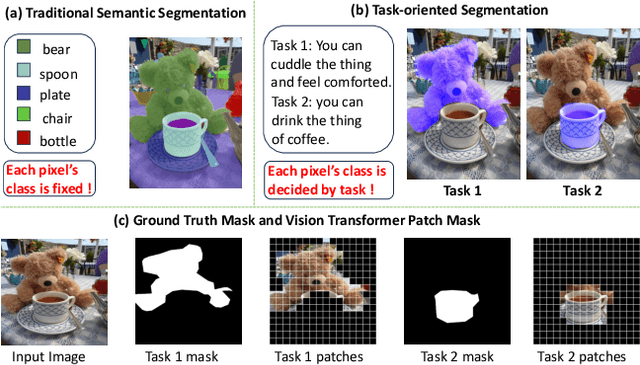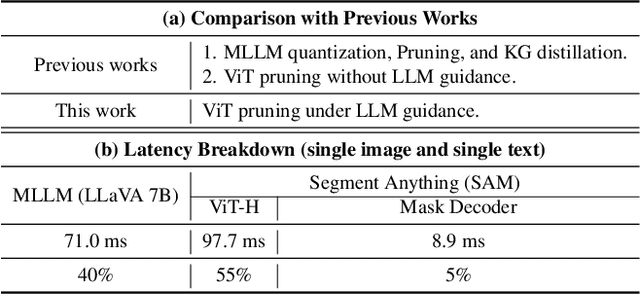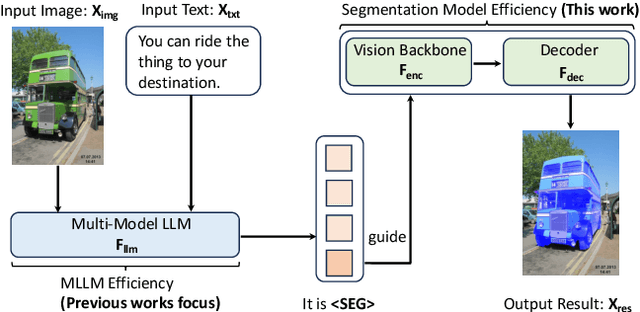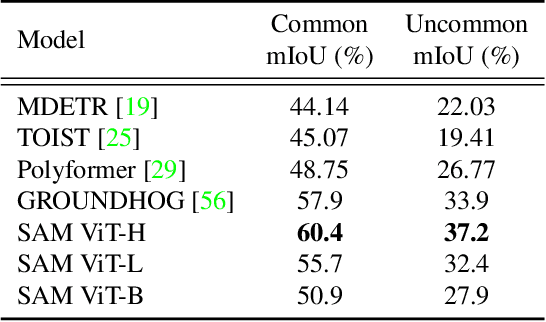Hanning Chen
Enabling Group Fairness in Graph Unlearning via Bi-level Debiasing
May 14, 2025Abstract:Graph unlearning is a crucial approach for protecting user privacy by erasing the influence of user data on trained graph models. Recent developments in graph unlearning methods have primarily focused on maintaining model prediction performance while removing user information. However, we have observed that when user information is deleted from the model, the prediction distribution across different sensitive groups often changes. Furthermore, graph models are shown to be prone to amplifying biases, making the study of fairness in graph unlearning particularly important. This raises the question: Does graph unlearning actually introduce bias? Our findings indicate that the predictions of post-unlearning models become highly correlated with sensitive attributes, confirming the introduction of bias in the graph unlearning process. To address this issue, we propose a fair graph unlearning method, FGU. To guarantee privacy, FGU trains shard models on partitioned subgraphs, unlearns the requested data from the corresponding subgraphs, and retrains the shard models on the modified subgraphs. To ensure fairness, FGU employs a bi-level debiasing process: it first enables shard-level fairness by incorporating a fairness regularizer in the shard model retraining, and then achieves global-level fairness by aligning all shard models to minimize global disparity. Our experiments demonstrate that FGU achieves superior fairness while maintaining privacy and accuracy. Additionally, FGU is robust to diverse unlearning requests, ensuring fairness and utility performance across various data distributions.
LVLM_CSP: Accelerating Large Vision Language Models via Clustering, Scattering, and Pruning for Reasoning Segmentation
Apr 15, 2025Abstract:Large Vision Language Models (LVLMs) have been widely adopted to guide vision foundation models in performing reasoning segmentation tasks, achieving impressive performance. However, the substantial computational overhead associated with LVLMs presents a new challenge. The primary source of this computational cost arises from processing hundreds of image tokens. Therefore, an effective strategy to mitigate such overhead is to reduce the number of image tokens, a process known as image token pruning. Previous studies on image token pruning for LVLMs have primarily focused on high level visual understanding tasks, such as visual question answering and image captioning. In contrast, guiding vision foundation models to generate accurate visual masks based on textual queries demands precise semantic and spatial reasoning capabilities. Consequently, pruning methods must carefully control individual image tokens throughout the LVLM reasoning process. Our empirical analysis reveals that existing methods struggle to adequately balance reductions in computational overhead with the necessity to maintain high segmentation accuracy. In this work, we propose LVLM_CSP, a novel training free visual token pruning method specifically designed for LVLM based reasoning segmentation tasks. LVLM_CSP consists of three stages: clustering, scattering, and pruning. Initially, the LVLM performs coarse-grained visual reasoning using a subset of selected image tokens. Next, fine grained reasoning is conducted, and finally, most visual tokens are pruned in the last stage. Extensive experiments demonstrate that LVLM_CSP achieves a 65% reduction in image token inference FLOPs with virtually no accuracy degradation, and a 70% reduction with only a minor 1% drop in accuracy on the 7B LVLM.
Can Multimodal Large Language Models be Guided to Improve Industrial Anomaly Detection?
Jan 27, 2025Abstract:In industrial settings, the accurate detection of anomalies is essential for maintaining product quality and ensuring operational safety. Traditional industrial anomaly detection (IAD) models often struggle with flexibility and adaptability, especially in dynamic production environments where new defect types and operational changes frequently arise. Recent advancements in Multimodal Large Language Models (MLLMs) hold promise for overcoming these limitations by combining visual and textual information processing capabilities. MLLMs excel in general visual understanding due to their training on large, diverse datasets, but they lack domain-specific knowledge, such as industry-specific defect tolerance levels, which limits their effectiveness in IAD tasks. To address these challenges, we propose Echo, a novel multi-expert framework designed to enhance MLLM performance for IAD. Echo integrates four expert modules: Reference Extractor which provides a contextual baseline by retrieving similar normal images, Knowledge Guide which supplies domain-specific insights, Reasoning Expert which enables structured, stepwise reasoning for complex queries, and Decision Maker which synthesizes information from all modules to deliver precise, context-aware responses. Evaluated on the MMAD benchmark, Echo demonstrates significant improvements in adaptability, precision, and robustness, moving closer to meeting the demands of real-world industrial anomaly detection.
Tell Me What to Track: Infusing Robust Language Guidance for Enhanced Referring Multi-Object Tracking
Dec 17, 2024Abstract:Referring multi-object tracking (RMOT) is an emerging cross-modal task that aims to localize an arbitrary number of targets based on a language expression and continuously track them in a video. This intricate task involves reasoning on multi-modal data and precise target localization with temporal association. However, prior studies overlook the imbalanced data distribution between newborn targets and existing targets due to the nature of the task. In addition, they only indirectly fuse multi-modal features, struggling to deliver clear guidance on newborn target detection. To solve the above issues, we conduct a collaborative matching strategy to alleviate the impact of the imbalance, boosting the ability to detect newborn targets while maintaining tracking performance. In the encoder, we integrate and enhance the cross-modal and multi-scale fusion, overcoming the bottlenecks in previous work, where limited multi-modal information is shared and interacted between feature maps. In the decoder, we also develop a referring-infused adaptation that provides explicit referring guidance through the query tokens. The experiments showcase the superior performance of our model (+3.42%) compared to prior works, demonstrating the effectiveness of our designs.
Expanding Event Modality Applications through a Robust CLIP-Based Encoder
Dec 04, 2024Abstract:This paper introduces a powerful encoder that transfers CLIP`s capabilities to event-based data, enhancing its utility and expanding its applicability across diverse domains. While large-scale datasets have significantly advanced image-based models, the scarcity of comprehensive event datasets has limited performance potential in event modality. To address this challenge, we adapt CLIP`s architecture to align event embeddings with image embeddings, supporting zero-shot learning and preserving text alignment while mitigating catastrophic forgetting. Our encoder achieves strong performance in object recognition, with competitive results in zero-shot and few-shot learning tasks. Notably, it generalizes effectively to events extracted from video data without requiring additional training, highlighting its versatility. Additionally, we integrate this encoder within a cross-modality framework that facilitates interaction across five modalities-Image, Event, Text, Sound, and Depth-expanding the possibilities for cross-modal applications. Overall, this work underscores the transformative potential of a robust event encoder, broadening the scope and utility of event-based data across various fields.
VLTP: Vision-Language Guided Token Pruning for Task-Oriented Segmentation
Sep 13, 2024



Abstract:Vision Transformers (ViTs) have emerged as the backbone of many segmentation models, consistently achieving state-of-the-art (SOTA) performance. However, their success comes at a significant computational cost. Image token pruning is one of the most effective strategies to address this complexity. However, previous approaches fall short when applied to more complex task-oriented segmentation (TOS), where the class of each image patch is not predefined but dependent on the specific input task. This work introduces the Vision Language Guided Token Pruning (VLTP), a novel token pruning mechanism that can accelerate ViTbased segmentation models, particularly for TOS guided by multi-modal large language model (MLLM). We argue that ViT does not need to process every image token through all of its layers only the tokens related to reasoning tasks are necessary. We design a new pruning decoder to take both image tokens and vision-language guidance as input to predict the relevance of each image token to the task. Only image tokens with high relevance are passed to deeper layers of the ViT. Experiments show that the VLTP framework reduces the computational costs of ViT by approximately 25% without performance degradation and by around 40% with only a 1% performance drop.
Promoting Fairness in Link Prediction with Graph Enhancement
Sep 13, 2024Abstract:Link prediction is a crucial task in network analysis, but it has been shown to be prone to biased predictions, particularly when links are unfairly predicted between nodes from different sensitive groups. In this paper, we study the fair link prediction problem, which aims to ensure that the predicted link probability is independent of the sensitive attributes of the connected nodes. Existing methods typically incorporate debiasing techniques within graph embeddings to mitigate this issue. However, training on large real-world graphs is already challenging, and adding fairness constraints can further complicate the process. To overcome this challenge, we propose FairLink, a method that learns a fairness-enhanced graph to bypass the need for debiasing during the link predictor's training. FairLink maintains link prediction accuracy by ensuring that the enhanced graph follows a training trajectory similar to that of the original input graph. Meanwhile, it enhances fairness by minimizing the absolute difference in link probabilities between node pairs within the same sensitive group and those between node pairs from different sensitive groups. Our extensive experiments on multiple large-scale graphs demonstrate that FairLink not only promotes fairness but also often achieves link prediction accuracy comparable to baseline methods. Most importantly, the enhanced graph exhibits strong generalizability across different GNN architectures.
Recoverable Anonymization for Pose Estimation: A Privacy-Enhancing Approach
Sep 01, 2024Abstract:Human pose estimation (HPE) is crucial for various applications. However, deploying HPE algorithms in surveillance contexts raises significant privacy concerns due to the potential leakage of sensitive personal information (SPI) such as facial features, and ethnicity. Existing privacy-enhancing methods often compromise either privacy or performance, or they require costly additional modalities. We propose a novel privacy-enhancing system that generates privacy-enhanced portraits while maintaining high HPE performance. Our key innovations include the reversible recovery of SPI for authorized personnel and the preservation of contextual information. By jointly optimizing a privacy-enhancing module, a privacy recovery module, and a pose estimator, our system ensures robust privacy protection, efficient SPI recovery, and high-performance HPE. Experimental results demonstrate the system's robust performance in privacy enhancement, SPI recovery, and HPE.
Vision Language Model for Interpretable and Fine-grained Detection of Safety Compliance in Diverse Workplaces
Aug 13, 2024Abstract:Workplace accidents due to personal protective equipment (PPE) non-compliance raise serious safety concerns and lead to legal liabilities, financial penalties, and reputational damage. While object detection models have shown the capability to address this issue by identifying safety items, most existing models, such as YOLO, Faster R-CNN, and SSD, are limited in verifying the fine-grained attributes of PPE across diverse workplace scenarios. Vision language models (VLMs) are gaining traction for detection tasks by leveraging the synergy between visual and textual information, offering a promising solution to traditional object detection limitations in PPE recognition. Nonetheless, VLMs face challenges in consistently verifying PPE attributes due to the complexity and variability of workplace environments, requiring them to interpret context-specific language and visual cues simultaneously. We introduce Clip2Safety, an interpretable detection framework for diverse workplace safety compliance, which comprises four main modules: scene recognition, the visual prompt, safety items detection, and fine-grained verification. The scene recognition identifies the current scenario to determine the necessary safety gear. The visual prompt formulates the specific visual prompts needed for the detection process. The safety items detection identifies whether the required safety gear is being worn according to the specified scenario. Lastly, the fine-grained verification assesses whether the worn safety equipment meets the fine-grained attribute requirements. We conduct real-world case studies across six different scenarios. The results show that Clip2Safety not only demonstrates an accuracy improvement over state-of-the-art question-answering based VLMs but also achieves inference times two hundred times faster.
EcoSense: Energy-Efficient Intelligent Sensing for In-Shore Ship Detection through Edge-Cloud Collaboration
Mar 26, 2024Abstract:Detecting marine objects inshore presents challenges owing to algorithmic intricacies and complexities in system deployment. We propose a difficulty-aware edge-cloud collaborative sensing system that splits the task into object localization and fine-grained classification. Objects are classified either at the edge or within the cloud, based on their estimated difficulty. The framework comprises a low-power device-tailored front-end model for object localization, classification, and difficulty estimation, along with a transformer-graph convolutional network-based back-end model for fine-grained classification. Our system demonstrates superior performance (mAP@0.5 +4.3%}) on widely used marine object detection datasets, significantly reducing both data transmission volume (by 95.43%) and energy consumption (by 72.7%}) at the system level. We validate the proposed system across various embedded system platforms and in real-world scenarios involving drone deployment.
 Add to Chrome
Add to Chrome Add to Firefox
Add to Firefox Add to Edge
Add to Edge